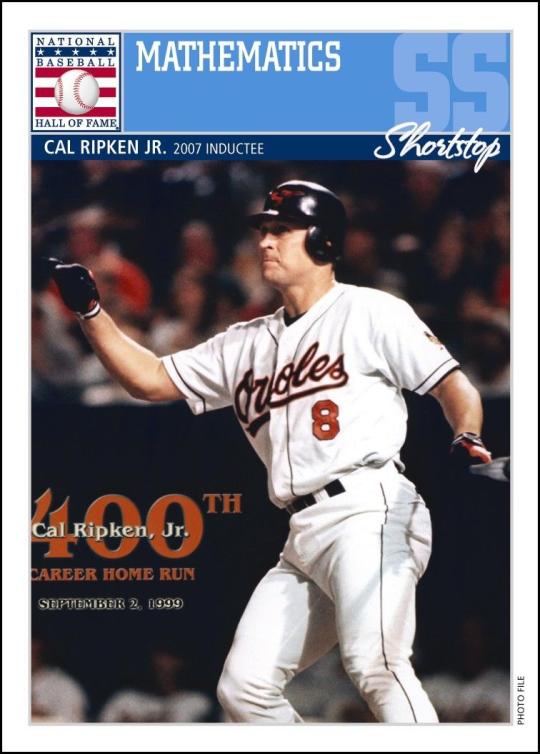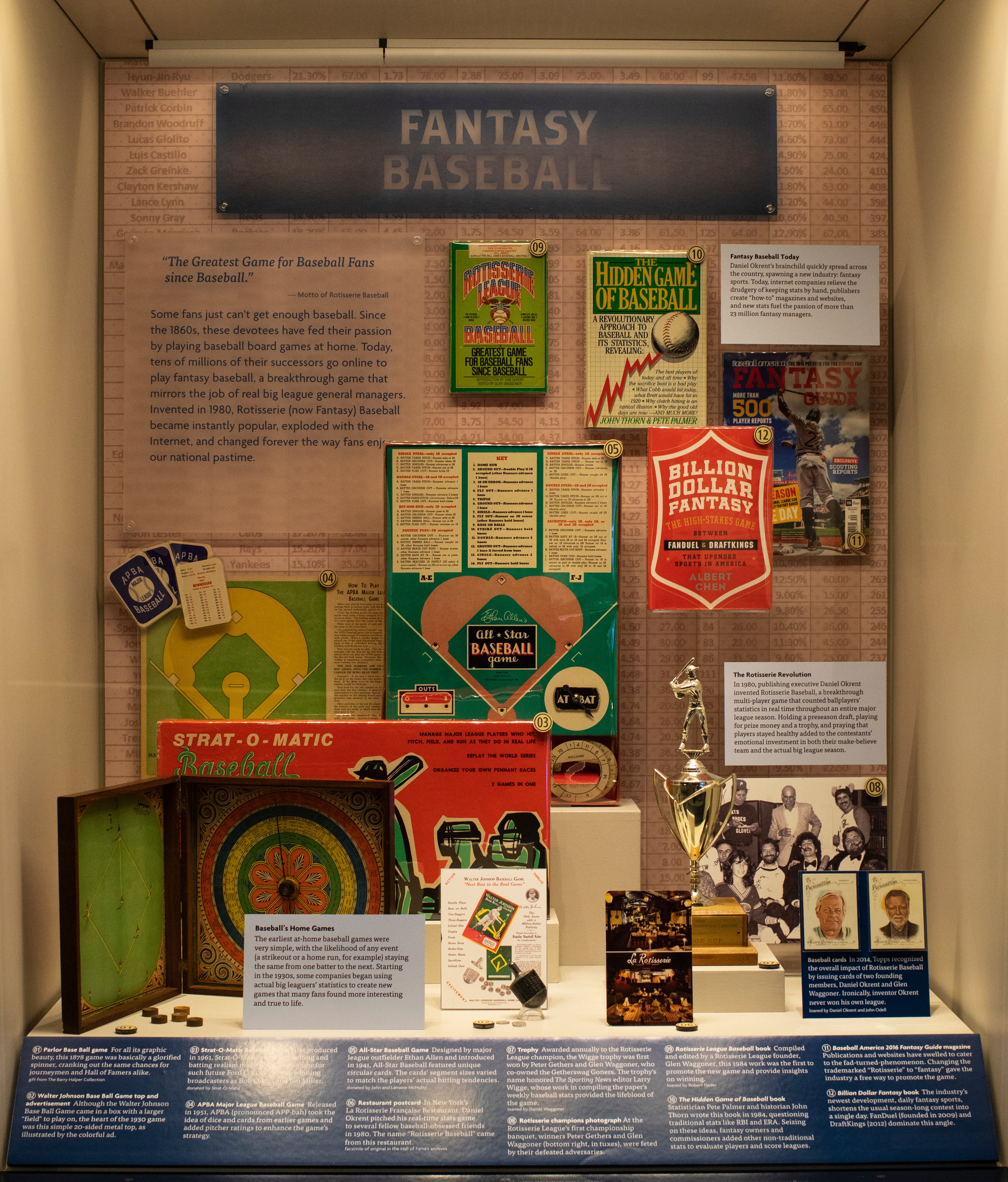Lesson 3: Batting Average Part 2: Decimals (Rookie)
Lesson
1. To begin this lesson, give each student one baseball card and have students look for the Batting Average (BA) column.
2. Ask students to give you a few examples of their players’ batting averages.
3. Demonstrate how a player’s batting average is determined. The fraction introduced in Lesson 2, Hits/At Bats, is a division problem. A player’s number of hits is divided by the player’s number of at bats.
4. Have students give you some examples of their players’ numbers of hits and numbers of at bats. For each player, set up the H and AB information as a fraction, then work through the division problem. Have students follow along and do each problem on their calculators.
5. Explain that batting averages are always expressed rounded to the nearest thousandth. Review decimal places and how to round decimal numbers.
6. Provide students with the following players’ statistics and have students determine each player’s batting average. This time, decimals should be rounded to the thousandths place.
• Miguel Cabrera: 197 Hits/ 572 At Bats (.344 Avg)
• Adrian Gonzalez: 213 Hits/630 At Bats (.338 Avg)
• Victor Martinez: 178 Hits/540 At Bats (.330 Avg)
• Alex Gordon: 185 Hits/611 At Bats (.303 Avg)
7. Depending on how quickly students catch on to these concepts, you may choose to stop and focus on certain concepts longer than others.
8. Provide students with “Batting Average Practice” worksheets (included) OR you may assign this worksheet for homework. Have students determine each player’s batting average.
Activity
1. Have students get together in the same pairs or groups from Lesson 2.
2. Pass out each group’s completed “Station 1-4” packet.
3. Explain that students are to work through the results of each station and convert each fraction to a decimal, rounded to the nearest thousandth.
Conclusion:
To complete this lesson and check for understanding, come together as a class and have students compare the average results of the different stations. For each station, chart each group’s average results on the board. Have students identify the highest and lowest averages for each station.
*Optional* You may have students add their activity averages to the baseball cards they created in Lesson 1.
Common Core Standards
CCSS.Math.Content.3.OA.A.2 Interpret whole-number quotients of whole numbers,
CCSS.Math.Content.3.OA.A.3 Use multiplication and division within 100 to solve word problems in situations involving equal groups, arrays, and measurement quantities, e.g., by using drawings and equations with a symbol for the unknown number to represent the problem.
CCSS.Math.Content.3.OA.A.4 Determine the unknown whole number in a multiplication or division equation relating three whole numbers.
CCSS.Math.Content.3.OA.B.5 Apply properties of operations as strategies to multiply and divide.
CCSS.Math.Content.3.OA.B.6 Understand division as an unknown-factor problem.
CCSS.Math.Content.3.OA.C.7 Fluently multiply and divide within 100, using strategies such as the relationship between multiplication and division or properties of operations.
CCSS.Math.Content.3.NBT.A.1 Use place value understanding to round whole numbers to the nearest 10 or 100.
CCSS.Math.Content.3.NF.A.1 Understand a fraction 1/b as the quantity formed by 1 part when a whole is partitioned into b equal parts; understand a fraction a/b as the quantity formed by a parts of size 1/b.
CCSS.Math.Content.3.NF.A.3 Explain equivalence of fractions in special cases, and compare fractions by reasoning about their size.
CCSS.Math.Content.4.OA.A.3 Solve multistep word problems posed with whole numbers and having whole-number answers using the four operations, including problems in which remainders must be interpreted. Represent these problems using equations with a letter standing for the unknown quantity. Assess the reasonableness of answers using mental computation and estimation strategies including rounding.
CCSS.Math.Content.4.NBT.A.2 Read and write multi-digit whole numbers using base-ten numerals, number names, and expanded form. Compare two multi-digit numbers based on meanings of the digits in each place, using >, =, and < symbols to record the results of comparisons.
CCSS.Math.Content.4.NBT.B.6 Find whole-number quotients and remainders with up to four-digit dividends and one-digit divisors, using strategies based on place value, the properties of operations, and/or the relationship between multiplication and division. Illustrate and explain the calculation by using equations, rectangular arrays, and/or area models.
CCSS.Math.Content.4.NF.C.6 Use decimal notation for fractions with denominators 10 or 100.
CCSS.Math.Content.5.OA.A.2 Write simple expressions that record calculations with numbers, and interpret numerical expressions without evaluating them.
CCSS.Math.Content.5.NBT.A.3 Read, write, and compare decimals to thousandths.
CCSS.Math.Content.5.NBT.A.4 Use place value understanding to round decimals to any place.
CCSS.Math.Content.5.NBT.B6 Find whole-number quotients of whole numbers with up to four-digit dividends and two-digit divisors, using strategies based on place value, the properties of operations, and/or the relationship between multiplication and division. Illustrate and explain the calculation by using equations, rectangular arrays, and/or area models.
CCSS.Math.Content.5.NF.B.3 Interpret a fraction as division of the numerator by the denominator (a/b = a ÷ b). Solve word problems involving division of whole numbers leading to answers in the form of fractions or mixed numbers, e.g., by using visual fraction models or equations to represent the problem.


